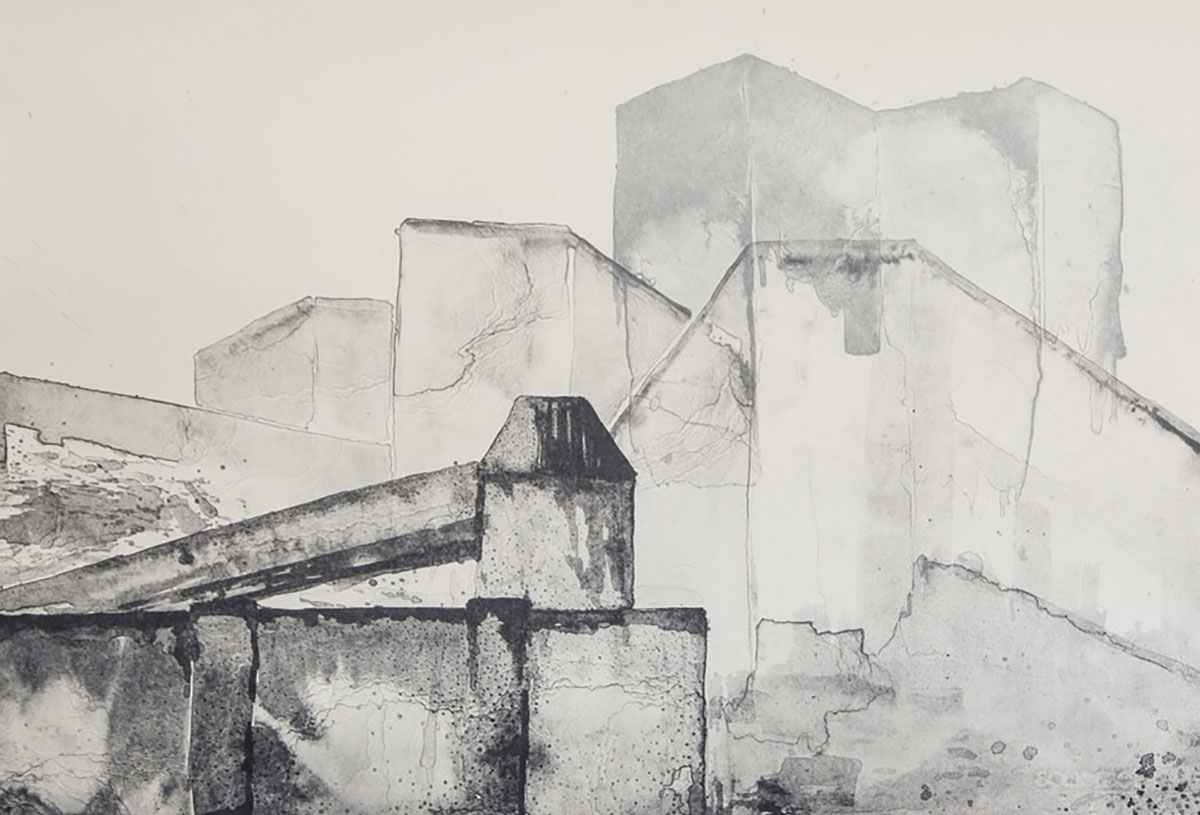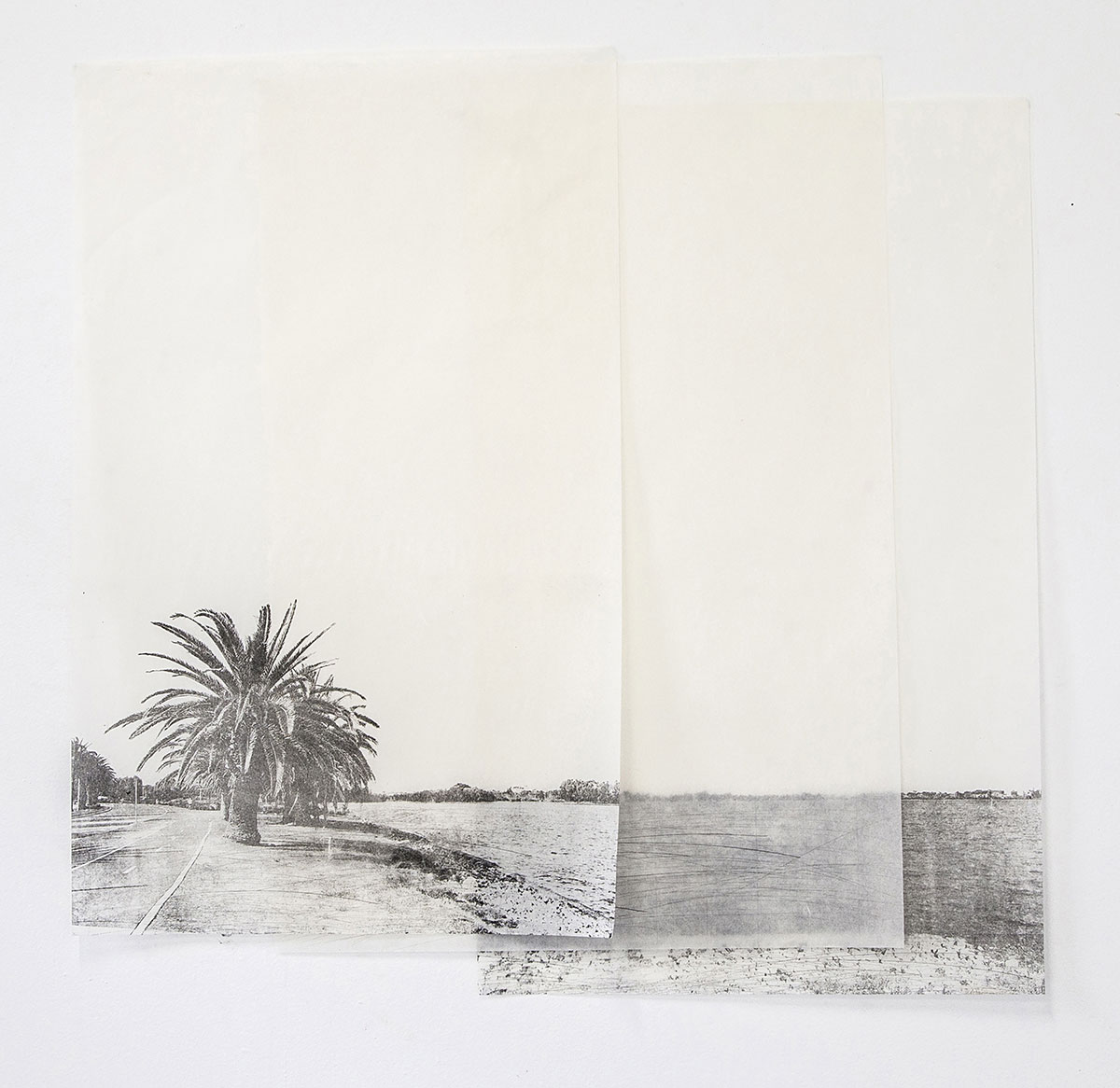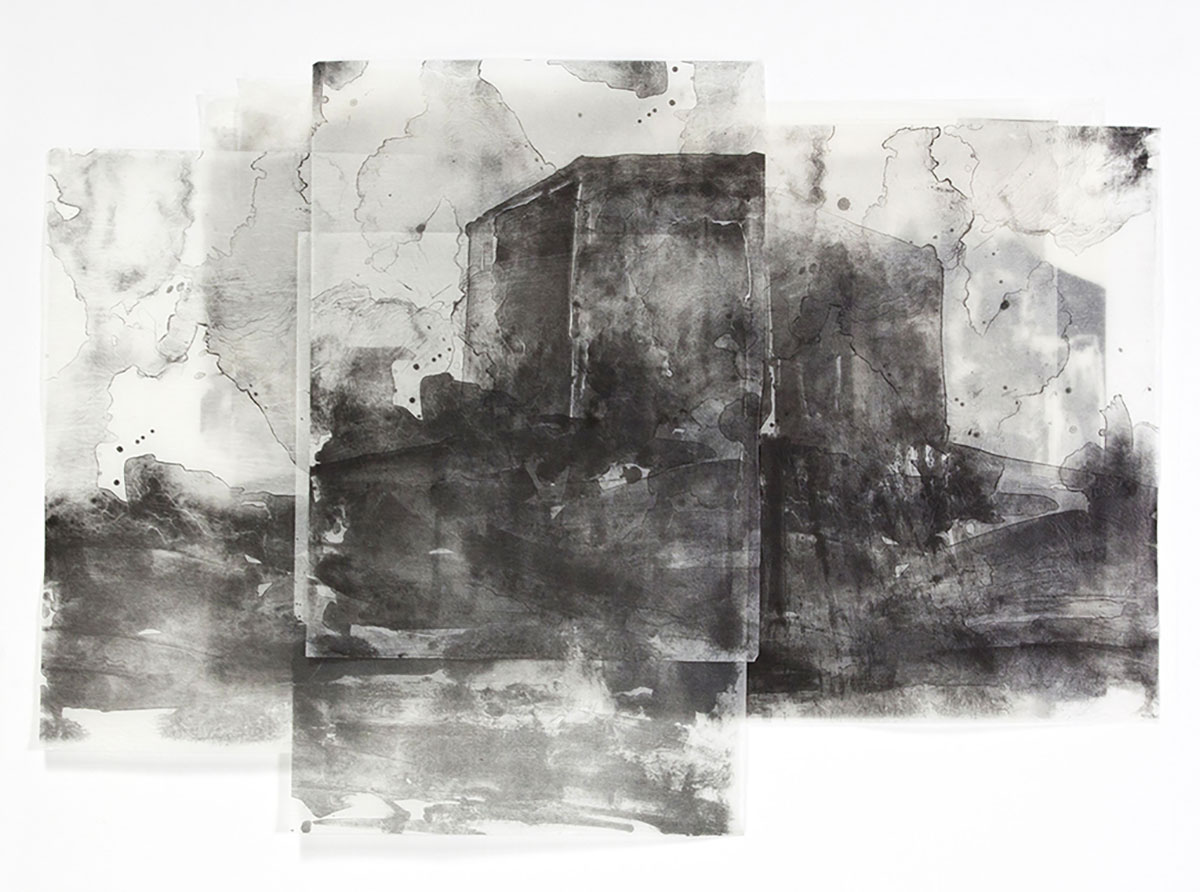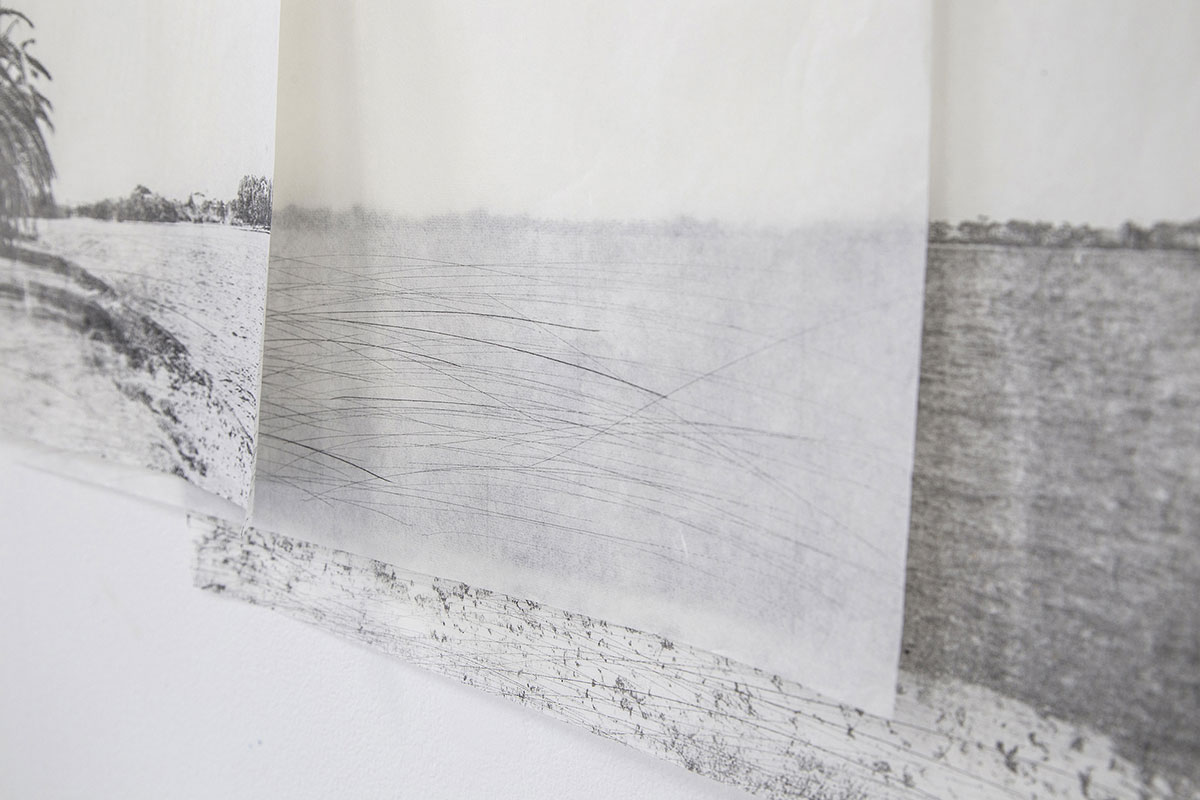
Monika Lukowska
WA artist Monika Lukowska discusses her academic and artistic practice an her new exhibition, Encountering place is at Gallery Central, North Metro TAFE, 12 Aberdeen St, Northbridge, WA, 9-17 March. Exhibition opening: 8 March.
March 9, 2018
In Interviews
Imprint: How did your PhD come about, and what is the thrust of the topic area you have investigated?
Monika Lukowska: The idea for this project originated from my ongoing interest in place, which I see both as a geographical location and as a site that triggers emotions and memories. In the last few years, I have frequently moved and travelled between places, either for study, work or vacation. I lived in Europe, the United States and now Australia. Places that I have visited often leave strong impressions on me which I attempted to weave into to my prints. Thus, I thought that my PhD would be a great opportunity to extensively examine the idea of place and analyse how places can affect people and influence art practice.
I became especially interested in the materiality of place, which I consider to be a combination of the physical aspects of place, such as its specific architecture and landscape, immaterial features like weather and smells, and experiences, feelings, meanings and sensations engendered through a bodily engagement with place. To examine the implications materiality had on my art practice, I compared the experience of place in my hometown, Katowice, Poland to my current home in Perth, Australia. I explored these places through walking; spending many months taking photographs, reflecting, recording and making sketches. My methodology and creative practice was a means of engaging with familiar and unfamiliar environments, re-discovering and discovering the feeling of belonging and attachment, which allowed me to gain insight into the complex experience of place. The tactile and sensorial knowledge of materiality, which I obtained through walking, became a main inspiration for my prints.
Imprint: How did your PhD come about, and what is the thrust of the topic area you have investigated?
Monika Lukowska: The idea for this project originated from my ongoing interest in place, which I see both as a geographical location and as a site that triggers emotions and memories. In the last few years, I have frequently moved and travelled between places, either for study, work or vacation. I lived in Europe, the United States and now Australia. Places that I have visited often leave strong impressions on me which I attempted to weave into to my prints. Thus, I thought that my PhD would be a great opportunity to extensively examine the idea of place and analyse how places can affect people and influence art practice.
I became especially interested in the materiality of place, which I consider to be a combination of the physical aspects of place, such as its specific architecture and landscape, immaterial features like weather and smells, and experiences, feelings, meanings and sensations engendered through a bodily engagement with place. To examine the implications materiality had on my art practice, I compared the experience of place in my hometown, Katowice, Poland to my current home in Perth, Australia. I explored these places through walking; spending many months taking photographs, reflecting, recording and making sketches. My methodology and creative practice was a means of engaging with familiar and unfamiliar environments, re-discovering and discovering the feeling of belonging and attachment, which allowed me to gain insight into the complex experience of place. The tactile and sensorial knowledge of materiality, which I obtained through walking, became a main inspiration for my prints.
Imprint: What are some of the results, in terms of the art work in the exhibition, and what are visitors likely to experience as far as a connection with the written component of the PhD?
Monika Lukowska: Throughout this project my studio practice and exegesis have strongly informed each other. Looking at my prints that span 3 years of the studio work, there is a visible shift, both visually and conceptually in the representation of place in my work. Often my early prints reflect on physical features of Katowice and Perth such as its landscape and architectural elements. While creating these works I used photographs and drawings for reference, attempting to preserve the resemblance of the actual places.
As my research progressed, I focused on examining the experience, and the role that feelings and sensations have in the perception of place which have greatly influenced my work. My latter prints are guided by my memories of touch, movement, atmosphere and the textures of places. I consider my final prints to no longer be about two different places but to compress the essence of my experiences in Katowice and Perth; weaving past with present, familiar with unfamiliar, and distance with proximity.
My intention was to represent the materiality of place as experienced through walking, attentive observations and bodily engagement. I hope that by drawing upon personal experiences, I can provide an insight into the intricate relationship between materiality and the human experience of place.
Imprint: How was the work developed technically and what were some of the challenges involved?
Monika Lukowska: During this project, I worked mainly with lithography which as a process can be very challenging. Even though, I have been utilizing this technique for many years, there were moments where I faced technical difficulties in terms of processing the stone and printing. Often these problems arose because the chemicals and materials available to me were different to those that I was accustomed to. I spent time trying to find the best acid solution for etching or trying to figure out why my image did not develop correctly. It took time and a lot of patience but in the end I was quite pleased with my results. I find the lithographic process very rewarding, as there is much room for experimentation with materials and techniques.
At the commencement of my studio work, I was focused on printing editions; whereas towards the end of my studio work a lot of my prints were only in unique state, combining multiple sheets of thin Japanese papers such as Kozo and Gampi. Working with Japanese papers became an important aspect of my practice. Its flexibility allowed me to overcome the limitation of the press as the paper can be easily folded and run through the press without the risk of permanently breaking or tearing its structure. This encouraged me to work on larger scale pushing the boundaries of my practice by experimenting with the presentation of the work and collaging layers printed on individual sheets of paper.
Imprint: What future projects will this doctorate enable for you?
Monika Lukowska: I plan to work towards the exhibition Convergence, with my PhD colleague Melanie McKee which will be a continuation of our prior collaborations. The exhibition is concerned with the human experience dislocating from origins, and understanding new places, so it corresponds with some of my research subjects. I will also start to work on a group project, with other artists form WA with whom I connected during my studies. This project aims to examine how we comprehend and respond to unknown places. These two projects will be continuation of my research and hopefully they will allow me to unfold other undeveloped ideas that emerged during my PhD.
Encountering place is at Gallery Central, North Metro TAFE, 12 Aberdeen St, Northbridge, WA, 9-17 March. Exhibition opening: 8 March.







